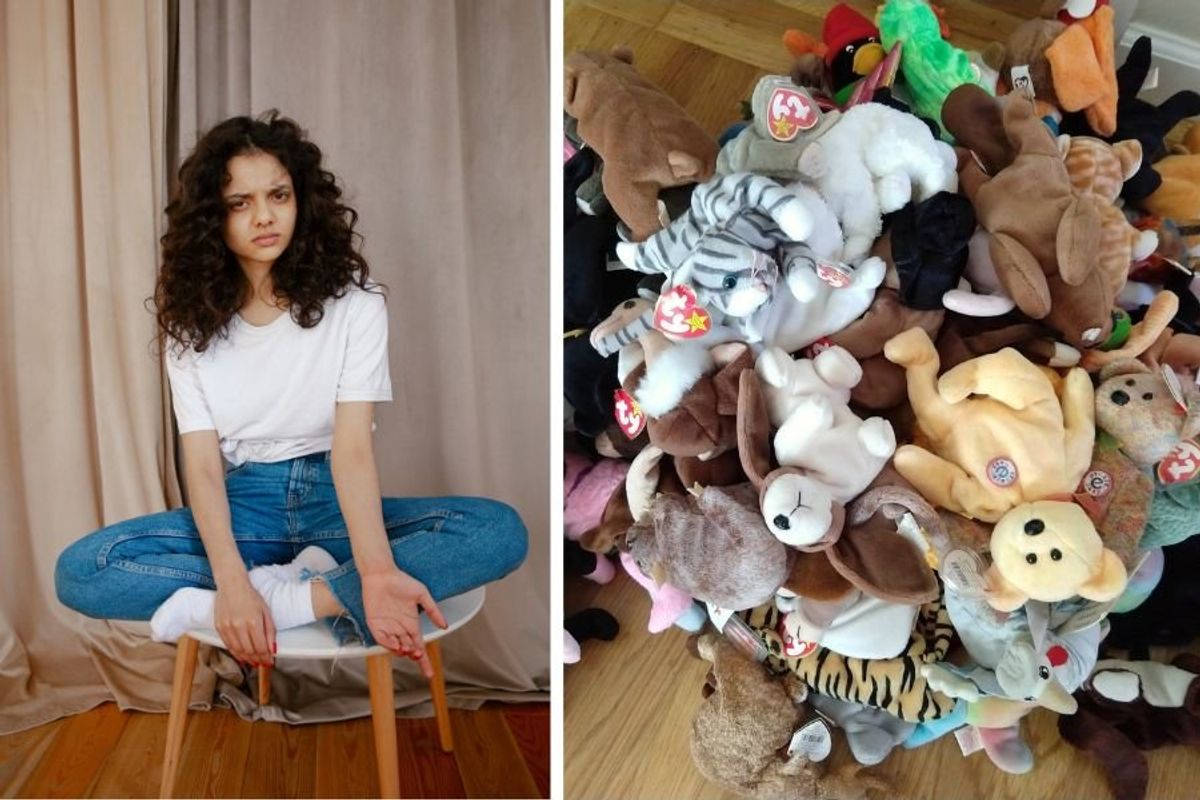'Cookie' Beanie Baby keeps selling out after going viral for being adorable but 'a little off'
People have become obsessed with Cookie's adventures.

'Cookie' Beanie Baby sells out after it goes viral for being 'off'
If you're a 90s kid, then Beanie Babies probably consumed a good portion of your allowance at some point in your life. It became an almost impulsive need to collect as many as you could, but like all toy crazes, it died down. Of course there are still avid collectors of the plushie toys filled with beads, and while the company likely isn't hurting, the days of sold out Beanie Babies has long been gone.
That is until the company released a Beanie Baby perfect for a little Christmas cheer—a gingerbread man named "Cookie." It wasn't simply the release of this adorable plush gingerbread man that made people excited for Beanie Babies again, though. The response came after someone saw the plush toy at the store and had a visceral reaction to its existence before immediately feeling badly about it.
The person goes by the name Devin on social media and their post about Cookie went viral due to their initial reaction to the Beanie Baby plushie. In the caption of the photo of Cookie, Devin writes, "saw this guy and said Ew ew ew ew ew ew ugly and then felt so bad i cried and bought him."
saw this guy and said Ew ew ew ew ew ew ugly and then felt so bad i cried and bought him pic.twitter.com/NGVt3aIFvS
— devin 🎱 (@fartpog) December 13, 2024
Devin admits in a comment that they thought the gingerbread man looked a "bit messed up" and initially, Cookie freaked them out. The response to Devin's initial reaction was filled with people determined to protect the inanimate object's feelings at all costs. Clearly Cookie did not ask to be created in a way that makes it look like he will haunt you in your sleep. The little fella is simply existing, and now, thanks to Devin, Cookie is a celebrity.
After the first post about Cookie, people start asking Devin to do daily activities with the plushie like tucking him in bed or taking him to the office. Obviously, Devin obliges, giving Cookie's fans what they want. But the love for Cookie didn't stop at his daily adventures. People are enamored with this little plushie and have begun making fan art. Someone even drew him with a new red backpack turning it into a whole storyline about him going to school.
Cookie first day of school https://t.co/UZ6QaYIqBz pic.twitter.com/bdTRaZ7xaK
— Webo🍳 (@C0ffeegg) December 14, 2024
The fascination with Cookie caused Ty Inc., the Beanie Baby creator, to quickly sell out of the gingerbread man plushie. They announced a restock, which did not last long as that also sold out. Cookie is living his best imaginary life and likely causing the plushie company to have flashbacks of 1998.
Devin shared an update on their new best buddy, writing in the caption, "my love for him grows every moment i spend with him," which caused someone to point out that Cookie looked happier. Since Cookie is a stuffed toy, he can't express his emotions, but if he could, he would be giddy at the love he's receiving.
Why does he actuallylook happier pic.twitter.com/xx8CUuLRDq
— funeral skipper (@evryonesvictim) December 15, 2024
"I'm actually tearing up right now oh my god he's so sweet and small and is so happy to be loved I am crying," someone writes.
"In the first pic he looks like he hopes someone will take him home and love him, then in the second picture he looks like he can’t believe he is loved and is overwhelmed with joy. i think it’s the way the light is hitting its eyes," someone else comments on his happier appearance.
"Where the hell did u buy this lil fella omg I want one too he looked so cute I might destroy the world for that silly lil creature," one person declares.
Cookie has sold out 🫣 https://t.co/hfjhaDQ4em
— Ty (@TyInc) December 17, 2024
"I'm gonna need you to update us on all his adventures for the rest of ur life i love him," another says.
Who knew a gingerbread Beanie Baby would unite so many people and cause one of the most adorable toy frenzies? If it's up to users on X, Devin will not be able to retire Cookie any time soon. There will be demands for a Cookie update in 18 years to see the plushie in a cap and gown graduating from Gingerbread High School. It's the little things that make you smile and Cookie is doing some serious heavy lifting in that arena.





 Buddy Holly was 20 years old in this photo.
Buddy Holly was 20 years old in this photo.  30 going on 60…
30 going on 60… The first deposit of orange peels in 1996.
The first deposit of orange peels in 1996. The site of the orange peel deposit (L) and adjacent pastureland (R).
The site of the orange peel deposit (L) and adjacent pastureland (R). Lab technician Erik Schilling explores the newly overgrown orange peel plot.
Lab technician Erik Schilling explores the newly overgrown orange peel plot. The site after a deposit of orange peels in 1998.
The site after a deposit of orange peels in 1998. The sign after clearing away the vines.
The sign after clearing away the vines. Happy Duck Dynasty GIF by DefyTV
Happy Duck Dynasty GIF by DefyTV tv land permission GIF by YoungerTV
tv land permission GIF by YoungerTV Hbo Therapy GIF by SuccessionHBO
Hbo Therapy GIF by SuccessionHBO Hungry Thanksgiving GIF by Looney Tunes
Hungry Thanksgiving GIF by Looney Tunes Feelings Feels GIF by WE tv
Feelings Feels GIF by WE tv Sobriety GIF by Lady Gaga
Sobriety GIF by Lady Gaga It's hard to go back to work full-time with babies.
It's hard to go back to work full-time with babies.